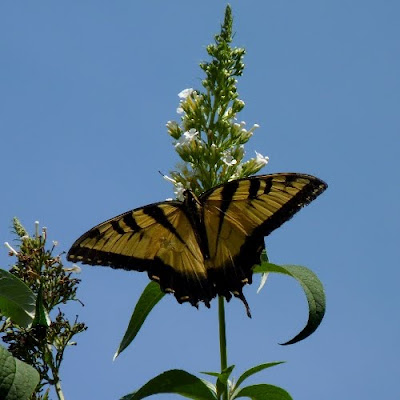Molt, the annual cycle of feather growth, is vital to a bird's survival. Without strong flight feathers, a bird could not fly well enough to forage, escape predators, or migrate. Body feathers must be replaced regularly because a bird with worn feathers would risk hypothermia and would not be able to fly as efficiently. Since molt is such an important part of a bird's life history, it is useful for birders and ornithologists to understand how the molt cycle works. A new guide in the Peterson series,
Molt in North American Birds, by Steve N.G. Howell, explains the process in a text accessible for non-specialists.
The book is divided into two major parts: an introduction on the purpose and types of molt and a guide to how molt works in individual families. The introduction begins with feather biology, and then moves to molt patterns. Most bird species follow one of four fundamental molt strategies: simple basic strategy, complex basic strategy, simple alternate strategy, or complex alternate strategy. A bird follows a basic strategy if it has one full molt per year; a bird following an alternate strategy has one full molt (into basic plumage) and a second partial molt of head and body feathers (into alternate plumage). Birds using an alternate strategy will often molt into a colorful
alternate plumage before the breeding season and a drab basic plumage
once the breeding season ends. A strategy is simple if a juvenile molts directly into adult basic plumage; a complex strategy involves at least one immature or formative plumage before a bird attains its adult appearance. Which strategy a species adopts depends on environmental and behavioral factors in its life history, such as whether it migrates long distances.
The introduction describes how each of these strategies work in the real world, using examples of bird species from many different families. High quality photographs show the
progression of plumages in various stages of molt. Some photographs are
overlaid with text that identifies particular feather tracts or generations of feathers. Exceptionally large birds may take longer to replace their flight feathers, so that one feather generation may still be growing in when the next generation starts to replace it.
Following the introduction,
Molt has a series of family accounts. The accounts describe what molt strategies each family uses and how those strategies suit the family's life history. The needs of a species or family may prompt variations on the four fundamental molt strategies. Ducks, for example, are unusual in having a colorful basic plumage and a drab alternate plumage (with a few exceptions) since they form pair bonds during the winter and early spring. They also molt all of their flight feathers at once to take advantage of abundant food supplies and cover during the late summer, whereas most birds replace flight feathers gradually. As with the introduction, the family accounts are illustrated with photographs showing examples of plumage types within a family. Some of the photos in this section are amazing, such as a Great Shearwater touching a glassy sea just enough for its wingtip to leave a small trail in the water.
Intermediate and advanced birders will benefit the most from the book as it helps to have some basic familiarity with how plumage changes through the seasons. However, anyone interested in birds could learn something from
Molt. Replacing feathers changes a bird's appearance, so the timing and types of molt can be used to establish a bird's age. Knowing how to age birds based on molt and plumage patterns can be useful for sorting out tricky identifications. Being aware of plumage details and molt can also be used to establish how many individuals of a species are present in a location or what times the age groups of a species are migrating. All of these things deepen our understanding of birds.
Molt in North American Birds is the second advanced guide to appear in the Peterson Reference Guide series. Like its predecessor in the series,
Gulls of the Americas, this book will work best as a reference for study at home. I am pleased to see that Houghton Mifflin Harcourt is producing advanced reference guides to supplement the field guide series, and I hope that the reference guide series continues to grow.
Steve N.G. Howell,
Peterson Reference Guide to Molt in North American Birds. Boston and New York: Houghton Mifflin Harcourt, 2010. $35.00 hardcover.
This review is based on a review copy provided by the publisher.




















































